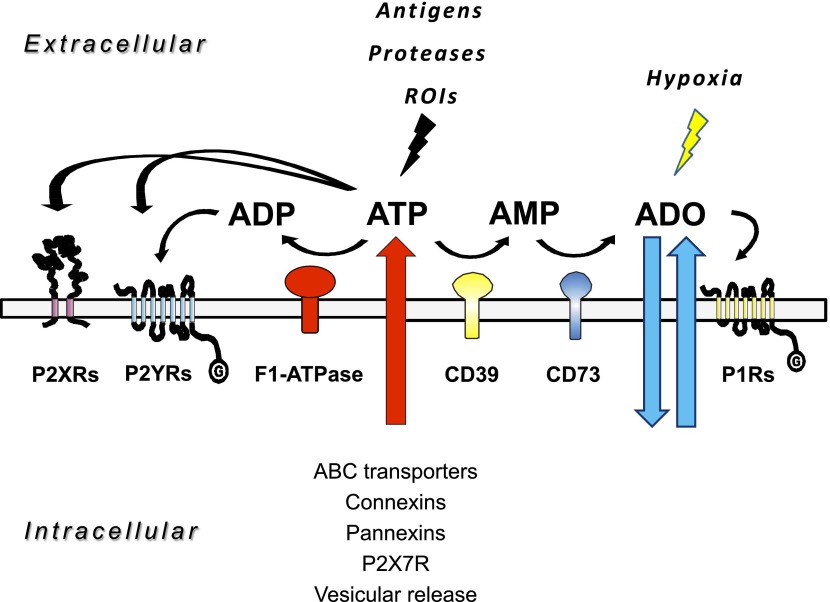Figure 1.
Purinergic signaling network. ADO and ATP are released in the extracellular compartment by different means. Other than by lesions of cell membranes with injury, ADO is released by means of equilibrium transporters, whereas ATP escapes via vesicles, connexins, pannexins, ABC transporters, and P2X7 receptors. Both ADO and ATP function as signaling molecules via activation of the P1 receptor (A1, A2A, A2B, and A3) and the P2 receptor (P2X and P2Y) subtypes, respectively. In the extracellular space, ADO is inactivated by ADA to inosine, ultimately to form hypoxanthine, by deribosylation. P1 receptor-mediated signaling is also terminated by cellular uptake of ADO by the equilibrative nucleoside transporters ENT1 and -2. In contrast, ATP is metabolized by enzymatic phosphohydrolysis in a 2-step process via CD39 conversion of ATP (or ADP) to AMP and CD73 phosphohydrolysis of AMP to ADO.

